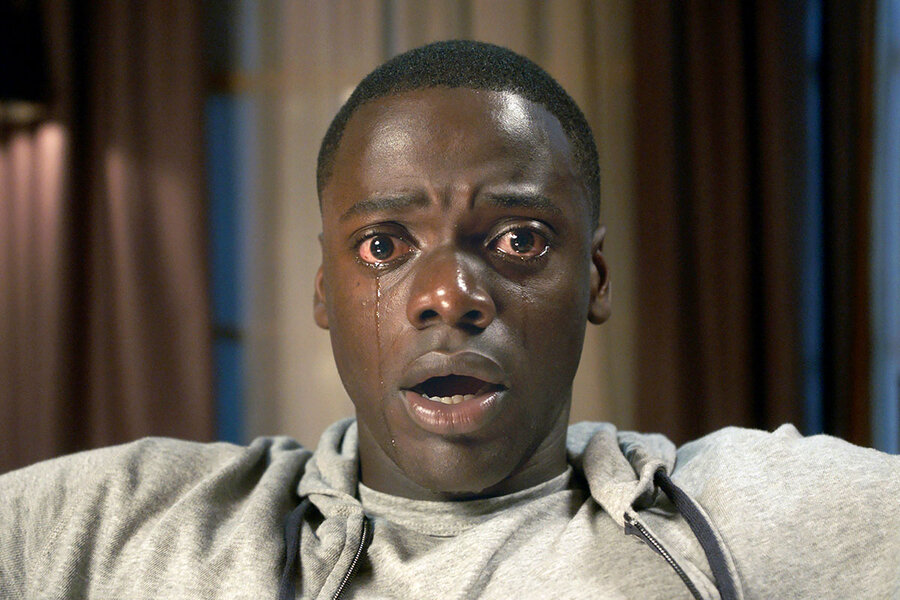The 10 best movies of 2017
Loading...
This year, the movies of Hollywood were overshadowed by the scandals of Hollywood. The sexual depredations perpetrated by studio chiefs, directors, and actors took top billing in an ongoing cavalcade of accusations and apologias by no means exclusive to the movie business.
Under the circumstances, the movies themselves often seemed more like a sideshow than the main event. Some commentators attempted to bridge this gap by indulging in dubious psychobiography posing as criticism. Woody Allen’s admittedly not very good “Wonder Wheel” was a conspicuous recipient of this syndrome. His alleged crimes were cited as a way to indict his movie.
It is the height of naiveté to assume that only the pure of heart are capable of making good movies, or that “bad” people are incapable of creating great art. There are simply too many historical examples to the contrary. But I am also enough of a humanist to believe that, by definition, there is no such thing as inhumane art. D.W. Griffith was a great artist except when, as in “The Birth of a Nation,” he was a vile racist. Leni Riefenstahl was a great artist except when, as in “Triumph of the Will,” she was a vile Nazi propagandist. The list goes on.
Because I am a film critic and not a sociologist (though sometimes the disciplines overlap), I find it vacuous to discuss a movie’s “message” without first evaluating the movie’s worth. That is to say, I am beholden to point out that films with all the right socially conscious credentials – such as “Mudbound,” set in the virulent Jim Crow South, or “Detroit,” about the police brutality-inspired riots in the summer of 1967 – can nevertheless be subpar as movies. In the current highly charged political climate, it’s tempting to celebrate certain films as vehicles for social change while also dismissing, or ignoring, their deficiencies. To do this is to take the easy way out. One of the many reasons I was grateful for Jordan Peele’s highly original “Get Out” was because it’s a terrifically funny-scary jape that also expresses far more than any other current movie the paranoia underlying modern black-white tensions. You can champion it with a clear conscience, no special pleading required.
Movies, of course, often reflect the historical eras in which they are made, whether by design or circumstance. Given how long it takes to develop most films, it’s not surprising that we do not yet have Trump-era movies.
And yet I was nonetheless somewhat taken aback at how blithely apolitical most of 2017’s dramatic movies were (as opposed to such documentaries as the climate change treatises “Chasing Coral” and “An Inconvenient Sequel,” or John Ridley’s voluminous and evenhanded “Let it Fall: Los Angeles 1982-1992,” which chronicled civil unrest in Los Angeles leading up to the Rodney King verdict).
The only movie that was reportedly rushed into production to connect with this year’s zeitgeist was Steven Spielberg’s “The Post,” a conventionally crafted freedom-of-the-press clarion call about The Washington Post and the Pentagon Papers that stars Tom Hanks as editor Ben Bradlee and Meryl Streep as Katharine Graham, the first female publisher of a major American newspaper. I suspect that the next year or two will bring far more pointed and contemporaneous dramas. Or not. Hollywood, aside from its headline-
grabbing denizens, has never waded very far into the weeds of controversy.
With all the international crises shaking up the world right now, Hollywood instead offered up surrogate crises from the past – inspirational stand-ins for the real deal. Perhaps this is why we had multiple, overlapping movies about British resilience during World War II: “Dunkirk,” “Darkest Hour,” and “Their Finest.” All feature comprehensible villains and predictable victories. You could argue that the onslaught of superhero sequels feeds the same need: Just substitute comic book baddies for terrorists.
2017 was also a movie year in which actresses, more so than actors, grabbed most of the attention-getting roles. Some of them, like Streep’s Katharine Graham, or Emma Stone’s Billie Jean King in “Battle of the Sexes,” were all about women triumphing over male privilege. I didn’t think Gal Gadot’s Wonder Woman, with her spandex and lasso, was exactly a feminist breakthrough for the ages, but it was kicky watching her lead the charge. If we are talking female indomitability, I would rather cast my ballot for Sally Hawkins’s intensely watchful performances as the deaf-mute cleaning woman in “The Shape of Water” and the hobbled outsider artist in “Maudie.”
The most resonant roles for women centered on the sometimes loving, frequently fraught relationships between mother and daughter as displayed in such films as “The Florida Project” (where the roles were played by Bria Vinaite and Brooklynn Kimberly Prince); “Marjorie Prime” (Lois Smith and Geena Davis); “The Big Sick” (Holly Hunter and Zoe Kazan); and “Lady Bird” (Laurie Metcalf and Saoirse Ronan). I suppose I should also include here Allison Janney and Margot Robbie in “I, Tonya,” except resonant is not exactly how I would describe their one-note face-offs.
But enough of my carping and cavils. Onward and upward to my top 10 list, in roughly descending order:
The Florida Project: Sean Baker’s movie about wayfarers living week to week in run-down budget motels outside Disney World is one of the most lyrical evocations of childhood I’ve ever seen. As a harried motel manager, Willem Dafoe gives his finest performance to date, and the mother-daughter teaming of Vinaite and Prince is peerless.
Get Out: The most astonishing writing-directing debut in years, Peele’s mash-up of horror and comedy and social satire is, also, flabbergastingly, the most trenchant new movie about American race relations.
Afterimage: The great Polish director Andrzej Wajda’s final film, and one of his best, features a towering performance by Boguslaw Linda as a real-life Polish avant-garde artist suffering for his intransigence under Communism.
Ex Libris: The New York Public Library: Fred Wiseman’s novelistically rich documentary is a celebration not only of a great New York institution but also the people who serve and inhabit its many branches. It’s ultimately about the sense of freedom that a great library can engender.
Faces Places: The great 89-year-old French New Wave director Agnès Varda, and the photographer and muralist known as JR, who is 34, travel the French countryside creating large-scale photo portraits of villagers that they then plaster onto the sides of buildings. From this unlikely pairing arises a near-masterpiece of a documentary that, in its evocation of friendship and mortality, is both gently, piercingly humane and wonderfully funny.
The Breadwinner: Animator Nora Twomey’s small gem, wistful and harrowing, is about a girl in Kabul, Afghanistan, who fights to rescue her family from the Taliban.
The Big Sick: A culture-clash comedy about a Pakistani-born Muslim stand-up comic and an American grad student, and the mayhem that ensues when she becomes seriously ill and both sets of parents frantically intervene. The script by married couple Emily V. Gordon and Kumail Nanjiani, who also co-stars with Zoe Kazan, is based on their lives, and perhaps that’s why it feels so true.
Kedi: A documentary about Istanbul’s teeming population of stray cats may not sound very promising, but director Ceyda Torun brings us right inside the felines’ world and, in the process, offers up a rhapsodic portrait of the people who care for them and the thronged Turkish city they share.
The Phantom Thread: Daniel Day-Lewis plays a famed dressmaker in 1950s London in Paul Thomas Anderson’s fascinating, inexorably creepy movie that Day-Lewis has stated will be his last. Say it ain’t so.
Mother!: I realize I’m going to take some heat for putting this widely loathed film on my best list, especially since I was less than enthused by the overrated critic faves “Three Billboards Outside Ebbing, Missouri” and “Call Me by Your Name,” but Darren Aronofsky’s fantasia about a self-infatuated poet (Javier Bardem) and his suffering muse of a wife (Jennifer Lawrence) is, like “Get Out,” both horrific and satiric in ways that move beyond the easy confines of genre.
In addition to the films favorably cited above, I would also single out “1945,” “The Wedding Plan,” “Novitiate,” “First They Killed My Father,” “Dawson City: Frozen Time,” and “Baby Driver.”






